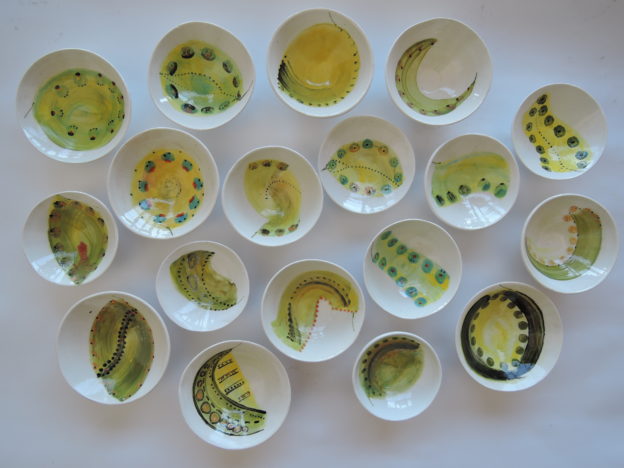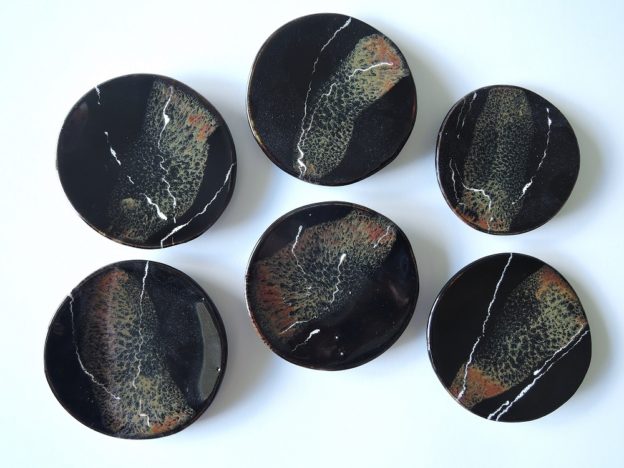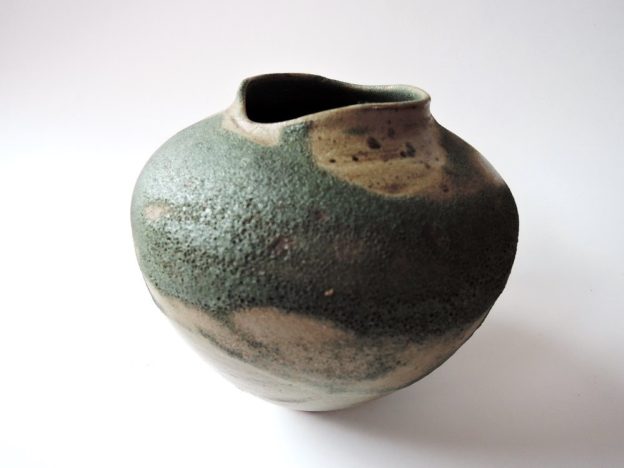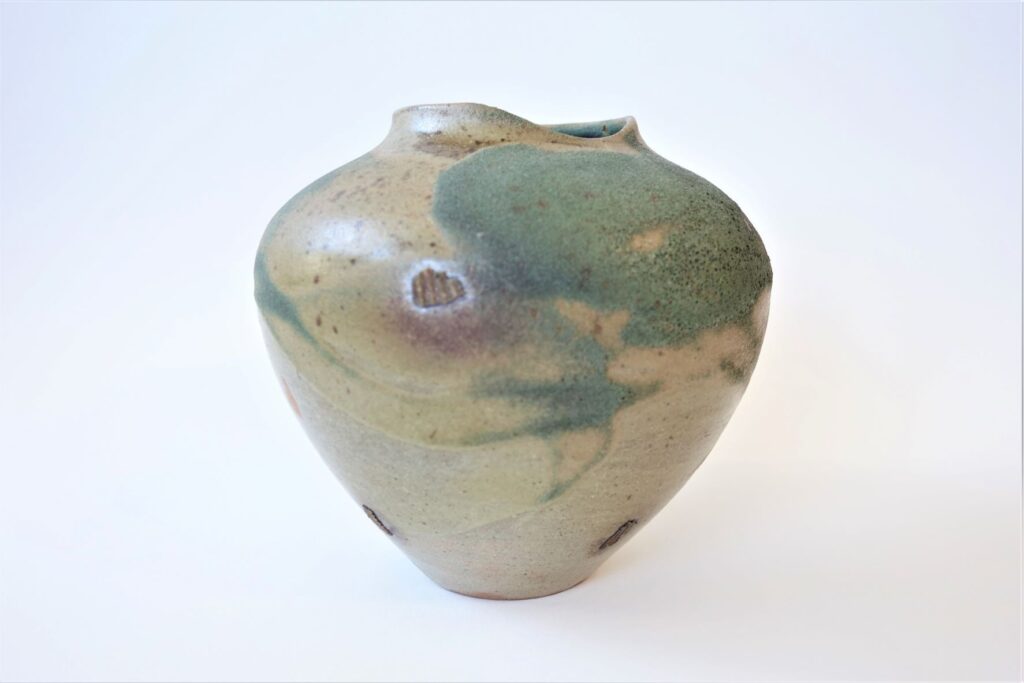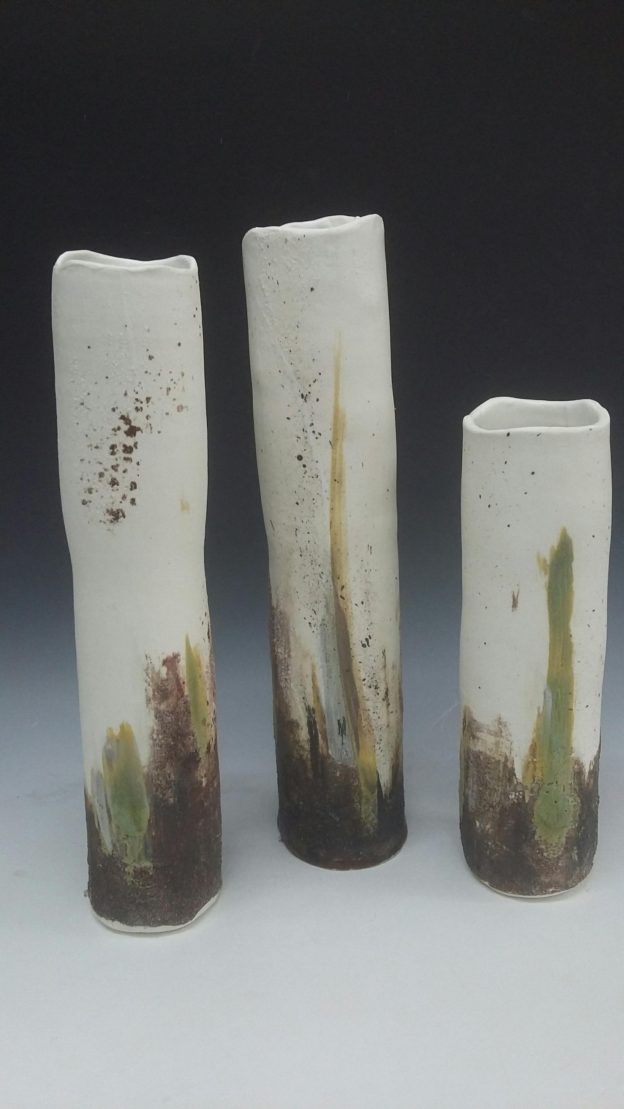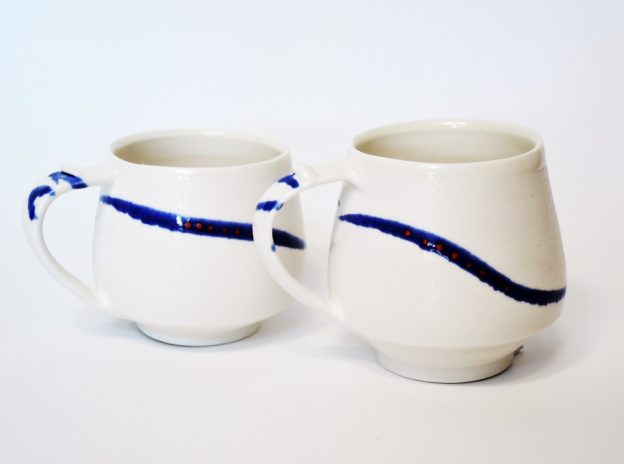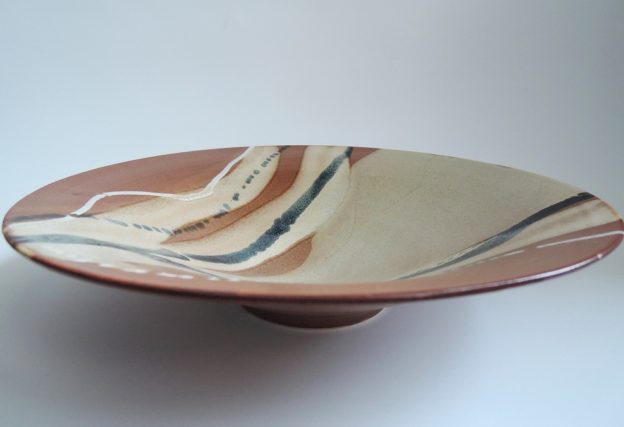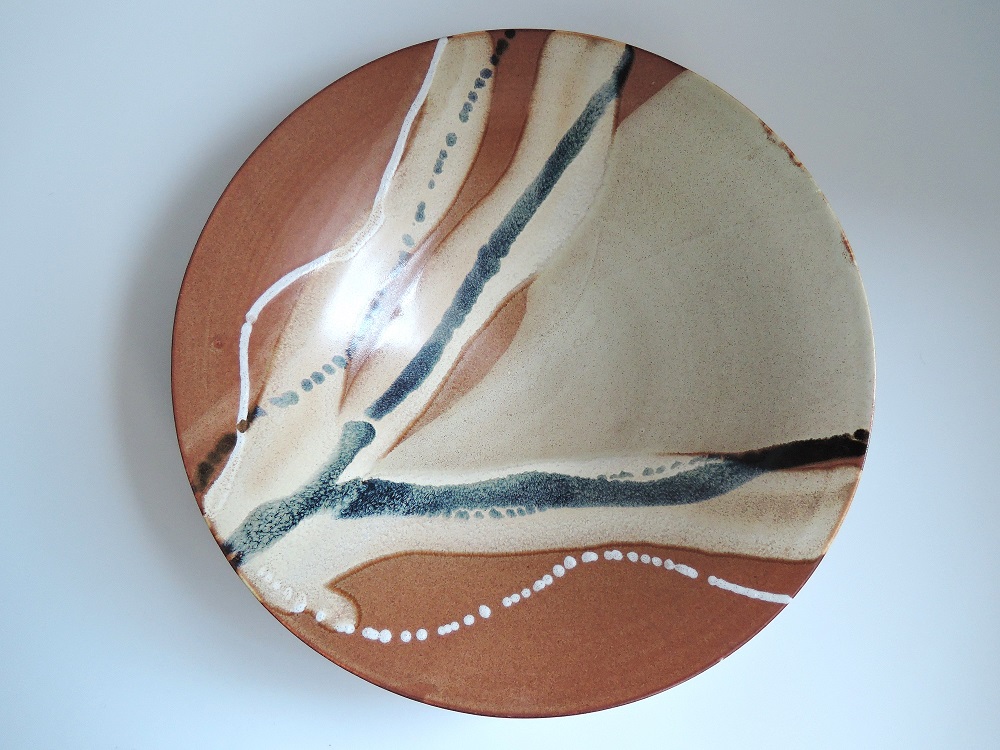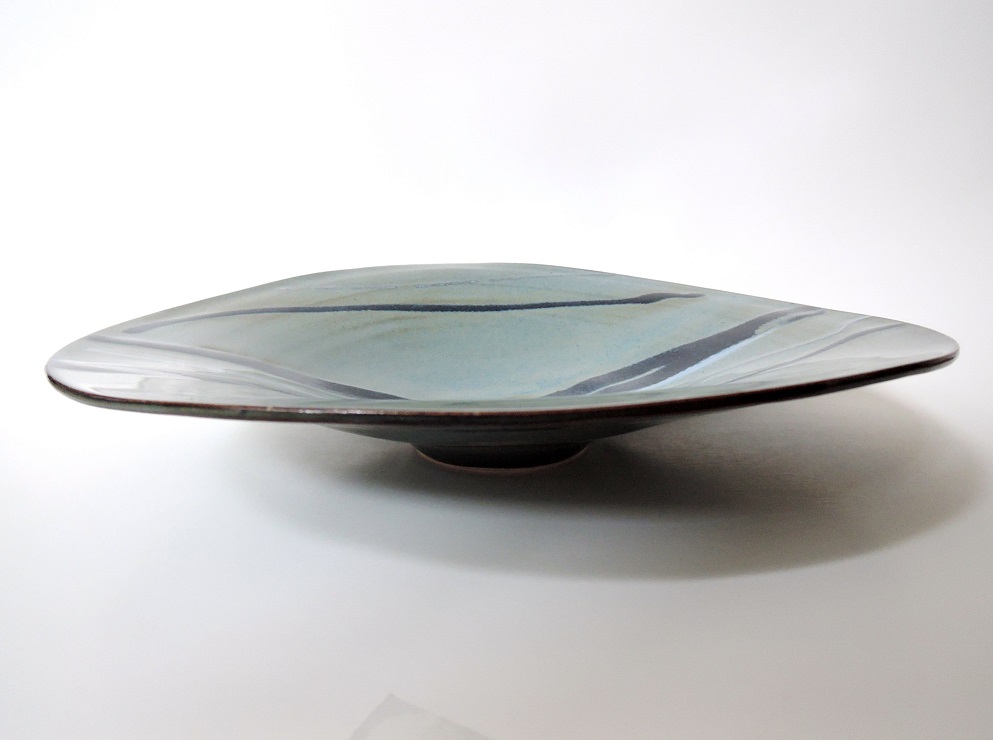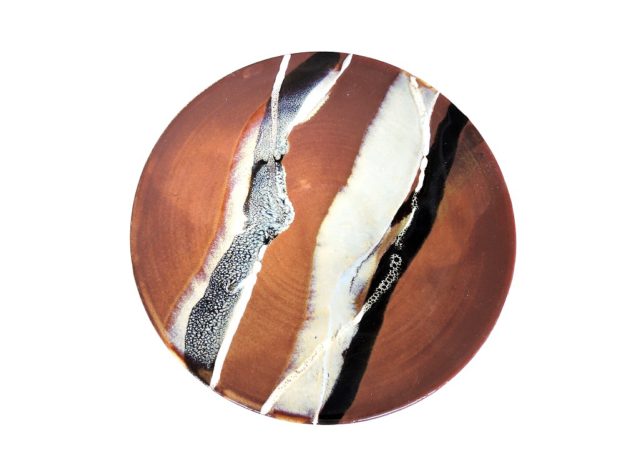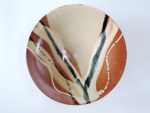These are bowls I gave to fellow Old Girls during a Wynberg Girls’ High School reunion while I was in Cape Town in early 2020. These were among the pieces I made during the mornings I spent at Lesley Porter’s pottery workshop near Muizemberg.
While visiting potters’ workshops and exhibitions in Cape Town, I had been impressed with the use of local underglazes, and wanted to try them myself. Here I used paintbrushes in applying them to the bisqued surfaces, rather than slip trailers as I usually do when applying glazes.
I wanted each bowl to be distinct, but for them all to form a set, so that each WGH old girl at the reunion would have one which would be paired with the others, and decorated with the same motif. Here each bowl is seen as an individual leaf sprouting from branches of one massive, long-standing tree.
Stoneware, fired in oxidation, to cone 5.
